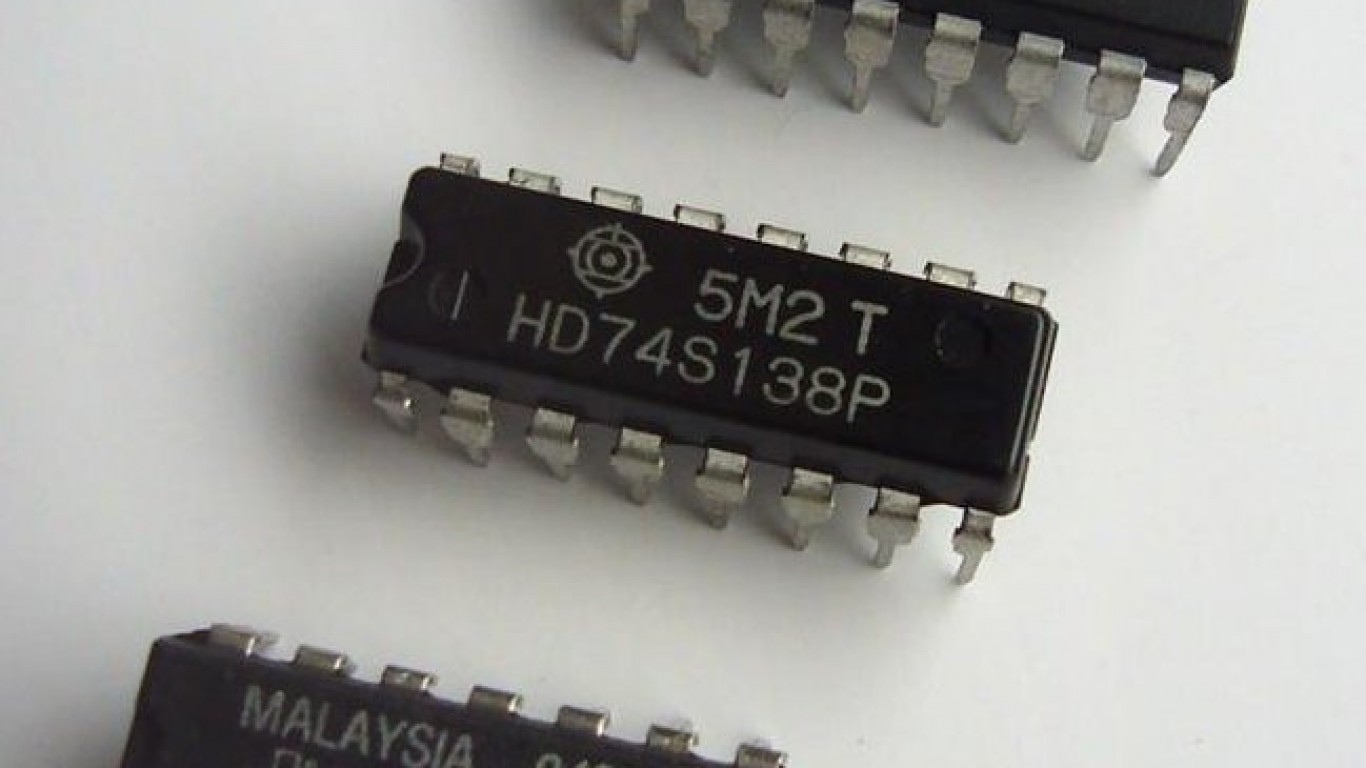
The tech stock selloff last month spooked many investors. Sector rotation into small-cap stocks and away from former high-fliers seemed ready to gain traction.
Tech stocks fell again a few weeks ago on fears of a hard landing for the economy. Since then, however, better data on inflation (down to 2.9%) and consumer strength (sentiment rose in August) has everyone expecting a Federal Reserve interest rate cut next month. According to Goldman Sachs, the odds of a recession have dropped to 20%.
The tech sector is rising once more. The Nasdaq 100 Technology Sector index easily outpaced the S&P 500 last week while semiconductor stocks in the iShares Semiconductor ETF (NASDAQ:SOXX) more than doubled the benchmark index’s performance.
Valuations Are Still Soaring Despite the Selloff
But it’s still a dicey time for tech stocks. Even with the pullback their shares suffered they still trade at lofty valuations. Nvidia (NASDAQ:NVDA) trades at 72 times earnings and 38 times revenue while Intel (NASDAQ:INTC), despite its plunging stock, still has a market multiple of 90.
A case can be made for some of these valuations. Nvidia’s business continues growing at triple-digit rates. There might be justification for its stock sitting in the nosebleed seats. Others are not so clear cut.
24/7 Wall St. Insights:
- A hard landing for the economy shook the tech sector, sending stocks reeling.
- Many tech stocks still carry lofty valuations that are hard to justify.
- If you want to pick up some of the most high upside stocks in the market “on sale,” check out our brand-new “The Next NVIDIA” report that lays out the next megatrends in AI and the companies we’re confident can dominate them.
2 Tech Stocks to Buy Today
Here are two tech stocks that are worth the price of admission. They might be “expensive” based on traditional valuation metrics, but they still deserve your consideration.
AMD On Its Way to Catching Nvidia

Semiconductor stock Advanced Micro Devices (NASDAQ:AMD) is quickly moving up the ladder of critical data center suppliers. Segment revenue soared 115% in the second quarter to $2.8 billion. It marks an acceleration in growth as data center revenue grew 80% in the first quarter.
Both advances were built on the strength of AMD’s Ryzen and EPYC processors, and the adoption of its MI300 artificial intelligence accelerator chips. In particular, the semiconductor stock is stealing market share from Intel in the data center space.
Yet AMD also has its eyes on Nvidia. Last month it made its third AI-oriented acquisition when it purchased Silo AI for $665 million and now it just acquired server maker ZT Systems for $4.9 billion. It shows the importance AMD places on the data center market for future growth.
While AMD stock is pricey at 179 times earnings, Wall Street forecasts long-term profit growth will expand at triple the rate it grew over the last five years. They peg earnings to grow at a compound annual growth rate (CAGR) of 32% compared to its previous 10% rate.
Bigger and Better with Texas Instruments

Integrated circuits, or ICs, remain integral to virtually all computers and electronic devices and Texas Instruments (NYSE:TXN) remains one of the leading analog chip manufacturers.
The pandemic-induced inventory glut is ending and we should soon enter a new upcycle. Texas Instruments revenue grew 4% quarter-to-quarter to $3.8 billion although it remained lower year-over-year.
The chipmaker, though, is getting a boost from the CHIPS and Science Act and will receive grants worth $1.6 billion to build three new manufacturing facilities. It will also get $3 billion in loans and federal tax credits to cover up to 25% of the facilities’ costs. TXN is committed to spending $18 billion to build the new plants.
Compared to AMD or Nvidia, Texas Instruments stock offers more reasonable valuations. It trades at 34 times earnings and 11x sales. It likely has a couple of quarters before all of its end markets, especially industrials and automotive, are growing again. The rest of TXN’s business is expanding with sales forecast to rise 7% in the third quarter.
Shares are up 17% in 2024, but that positions Texas Instruments stock at an attractive point before the next growth cycle begins.
C3.ai Is the One Tech Stock to Sell Now

While AI remains the buzzword of the day, C3.ai (NYSE:AI) is an AI stock to avoid at all costs. It glommed onto the trend early by rebranding itself as an AI leader and grabbing the AI ticker symbol. Any search will lead likely to the company. C3.ai caught the wave of investor enthusiasm at just the right time. Now the tide is going out on the stock and it will likely get pulled under by the riptide. Shares are down 10% year-to-date and 15% over the past year.
Rather than AI, its business is more practical business process software. Still, C3.ai reported a 20% increase in revenue in its fiscal fourth quarter that ended in May. It continues to post GAAP losses and they widened for the quarter and full year.
While C3.ai is attracting new customers, up 52% or 191 new closed agreements in the fourth quarter, 123 of them, or almost two-thirds, were a try-before-you-buy pilot agreement. The pilot program represents an increasing percentage of the new contract wins In the fiscal third quarter, agreements totaled 50 customers, but 58% were pilots.
C3.ai also trades at 10x sales but the stock has all the hallmarks of a company benefiting from just jumping on the AI bandwagon.
“The Next NVIDIA” Could Change Your Life
If you missed out on NVIDIA’s historic run, your chance to see life-changing profits from AI isn’t over.
The 24/7 Wall Street Analyst who first called NVIDIA’s AI-fueled rise in 2009 just published a brand-new research report named “The Next NVIDIA.”
Click here to download your FREE copy.
Thank you for reading! Have some feedback for us?
Contact the 24/7 Wall St. editorial team.



